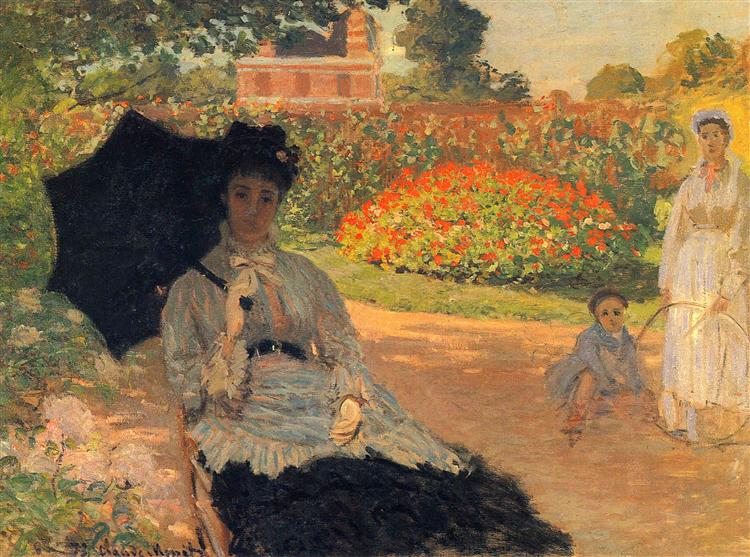描述
In Camille Monet in the Garden, painted in 1873, Claude Monet captures an intimate and serene moment, in which his wife, Camille Doncieux, becomes the soul and focus of a lush natural setting. This work is a brilliant example of the Impressionist style that Monet helped define, where the use of color and light are instrumental in conveying the emotion of the scene.
The composition is marked by careful perspective, with Camille positioned slightly to the left, almost in the centre of the frame, in a garden whose splendour unfolds around her. Camille's figure, dressed in a light dress, seems to merge with the surroundings, referring to the connection between humans and nature – a theme that resonates in many of Monet's works. Although Camille's figure is the protagonist, part of her charm lies in how she blends into the landscape, suggesting an idyllic harmony between the individual and the flora that surrounds him.
The use of colour is vibrant and dynamic. Monet employs a palette that varies from the deep greens of the vegetation to the pink and white hues of the flowers that seem to burst from the canvas. This chromatic diversity not only highlights the vitality of the garden, but also evokes a feeling of freshness and joy. Light takes over the scene, reflecting off the leaves and creating a play of shadows that adds depth and texture. This treatment of light is characteristic of Impressionism, where capturing a specific moment in time is of utmost importance.
Monet also makes a subtle gesture in relation to the painting's background. Although the figure of Camille is clearly the focal point, the background filled with flowers and foliage has particular importance: each detail is loosely rendered, the vibrant colours applied with quick, loose brushstrokes, suggesting constant movement and life in the garden. This style is a hallmark of Monet, who seeks not only to depict physical reality, but also to evoke a visual impression that provokes an emotional response.
Another interesting aspect of "Camille Monet in the Garden" is the context in which it was created. In 1873, Monet and Camille were still in the early years of their marriage. The painting reflects not only an artistic act, but also a sum of personal experiences and shared memories at a stage of life marked by simplicity and happiness. Furthermore, it is acknowledged that this work was painted in Argenteuil, a suburb of Paris where Monet found inspiration in the gardens and the light of the surroundings.
The Portrait of Camille in the Garden captures a moment of calm, but it is also a testament to the ephemeral beauty of life and nature, a theme that would resonate throughout Monet’s career. Through this work, the viewer is not only looking at an image of his wife, but is instead taken into a moment in his personal and professional history, where the celebration of the everyday is elevated to a poetic level.
As one looks at the work, one can feel the connection between the artist, the model and the surroundings, encapsulating not just a portrait of Camille, but a tribute to life itself, to nature in its purest form and to the ineffable happiness that small moments can offer. “Camille Monet in the Garden” is, in short, a testament to Monet’s genius, a hallmark of Impressionism that continues to thrill and captivate contemporary viewers.
KUADROS ©, a famous painting on your wall.
Hand-made oil painting reproductions, with the quality of professional artists and the distinctive seal of KUADROS ©.
Painting reproduction service with satisfaction guarantee. If you are not completely satisfied with the replica of your painting, we will refund 100% of your money.

